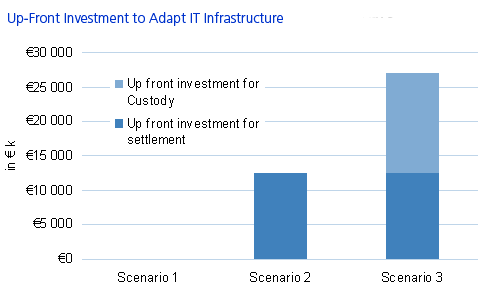Leveraging T2S Infrastructure: What Are the Options?
Abstract
A study by Celent delivers a detailed set of cost components that a financial intermediary needs to evaluate when considering changing its existing post-trade arrangement.
In a new report, Leveraging T2S Infrastructure: What Are the Options?, Celent analyzes the required adaptation and evolution of the post-trade infrastructure of financial institutions to take advantage of the future European post-trade infrastructure. This research is based on a detailed survey and follow-up interviews with six major participants representing the European post-trade environment across the main categories of providers and customers of post-trade services in Europe.
T2S is the proposal to the central securities depositories (CSDs) to transfer their settlement function to a common technical platform. The main benefit of this platform would be the reduction of settlement engines and therefore the reduction of costs for CSD infrastructure and custodians’ back offices. However, T2S is also driving new options for post-trade arrangements available to financial intermediaries. In the pre-T2S environment, financial institutions were likely to work with a subcustodian to conduct post-trade activities outside their home market. Once T2S is up and running, financial intermediaries will have different options of post-trade arrangements to choose from.

The evolution of the post-trade organisation of a financial intermediary should be considered very carefully, because it will change the cost structure of the FI. The results of our survey and analysis show that 25 cost components will either be impacted or emerged due to the intermediary’s modification of the post-trade infrastructure.
“For small and midsize institutions, there is no economic rationale to support a switch of post-trade arrangements, except when it comes to deciding which type of providers to work with, investor CSDs or subcustodians,” says Axel Pierron, Celent Senior Vice President and author of the report. “For very large institutions there could be a business case, but elements such as liquidity cost and operational risk should be evaluated very accurately before deciding.”
This report evaluates the overall IT investment and post-trade costs that should be expected by intermediaries (e.g., banks, global custodians, brokers) that will transform their post-trade infrastructure. The study delivers an estimate of the number of years required to reach the break-even point for each type of post-trade strategy implemented, based on the number of markets accessed, the volume of transactions, and the size of the institution.

